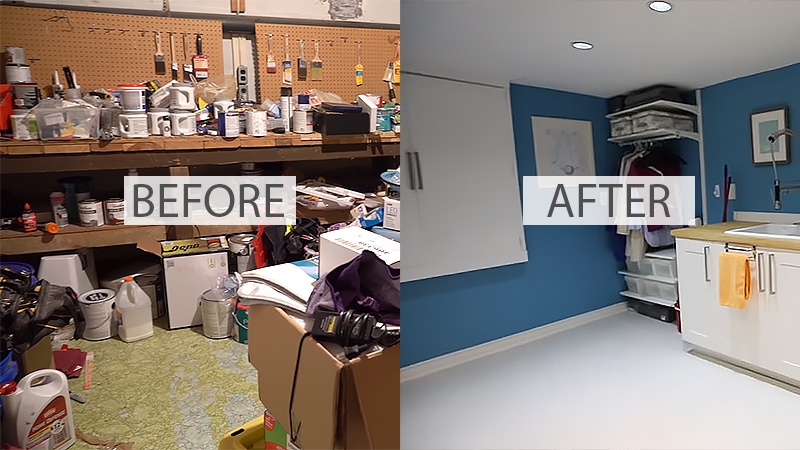This seemingly impenetrable surface can show grime and get stained in high traffic areas and become chipped or cracked due to the normal settling that happens in a home.
How to seal a cement basement floor laid in sections.
Working in a flooding basement.
During a rainy season a crack in a basement wall can allow an inch or two of water in but before you seek to repair the crack remove all the water from the floor.
After a home is built and the concrete floor is laid the water in the concrete will begin to push it s way out of the concrete as it starts to dry.
Measure and mark the center of all four walls at floor level.
Determine your starting wall.
For indoor concrete floors that won t be exposed to oil or grease use an acrylic sealer which is easy to apply.
If the floor is laid as the home is being built the cost of the concrete floor is considerably less than wood marble or even carpeting and sealing that floor should be a part of its cost.
After doing some research online and talking to the experts at my local hardware store i found out that you should always seal the basement floor with a moisture barrier primer.
If you want to seal over concrete floors that already have a seal try a polyurethane sealer.
A concrete basement floor is the most likely place in the home for unwanted moisture to seep.
One of the best ways to prevent this seeping water is to seal the unfinished floors.
It may be the most used flooring choice for basements because of its durability but even the most durable concrete basement floor can fall prey to wear and tear over the years.
You will lay the flooring lengthwise to this wall.
To seal concrete floors use an epoxy sealer if you want something durable that comes in a variety of colors.
An epoxy coated basement floor is one of the best ways to maintain and preserve your space.















































